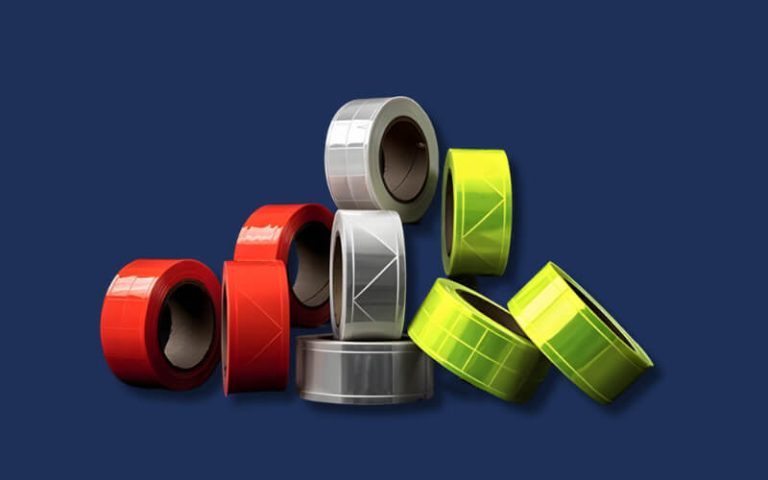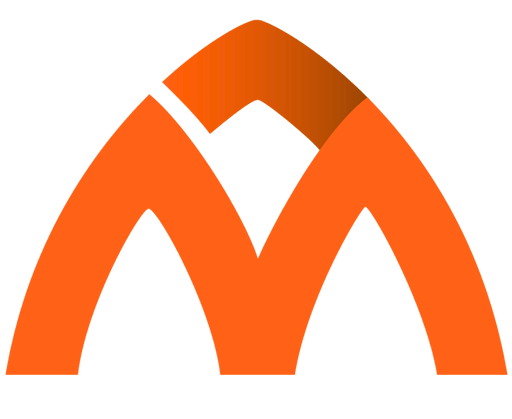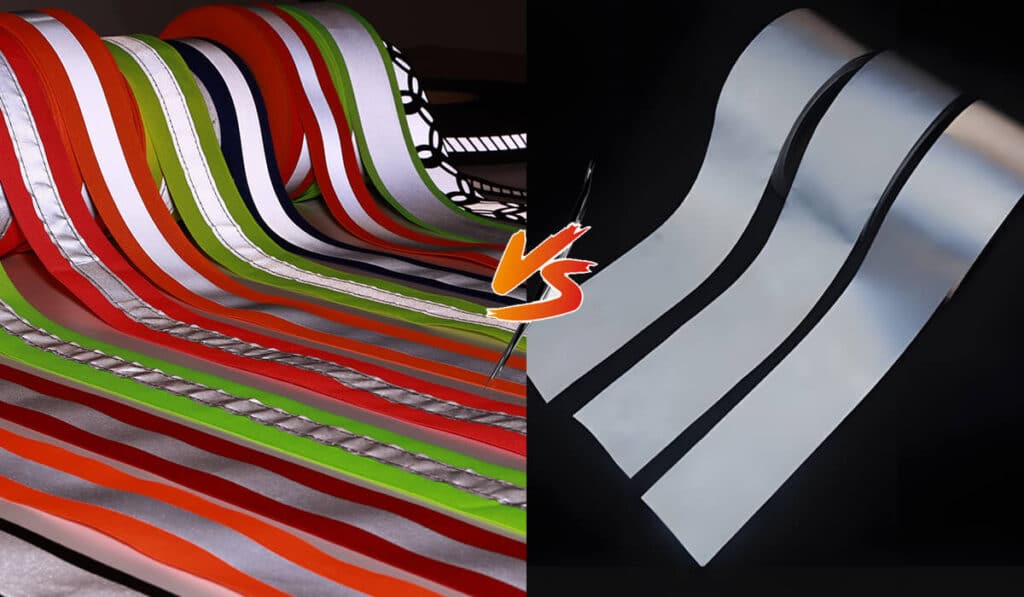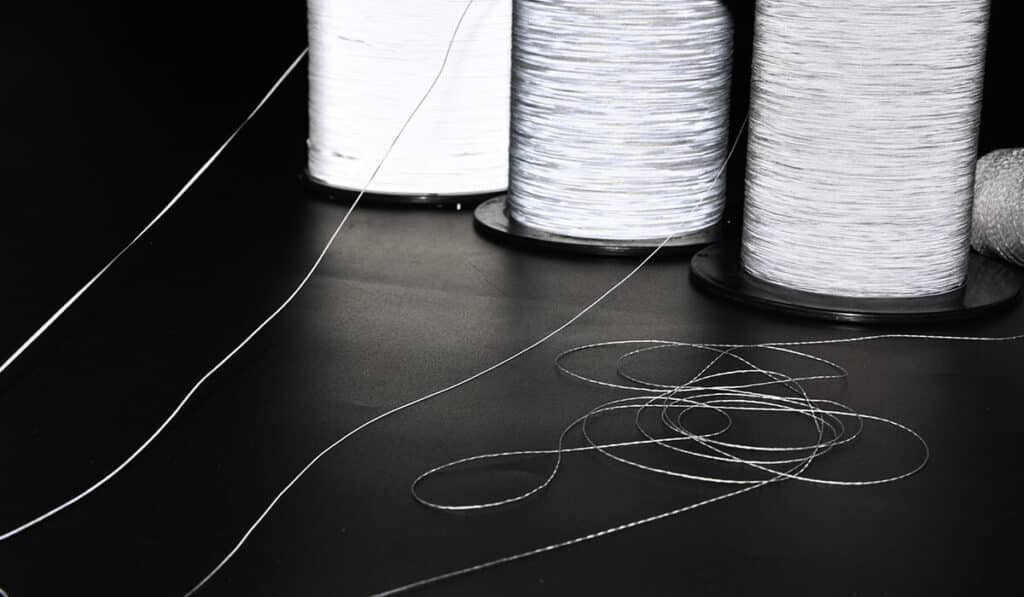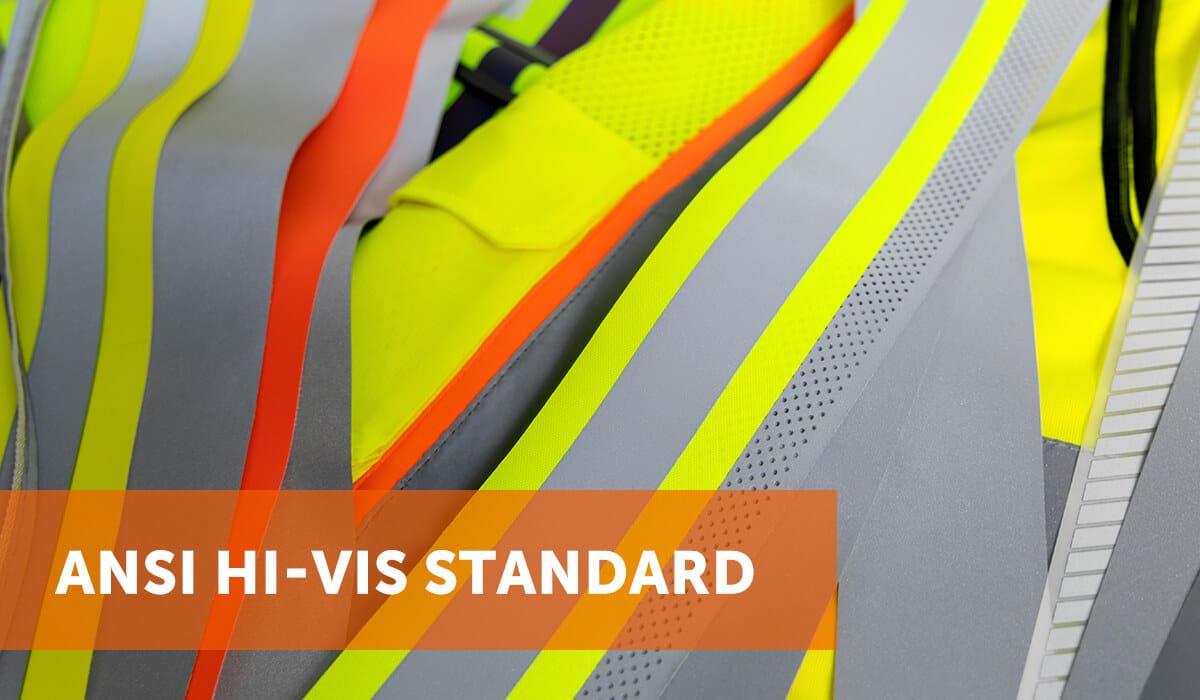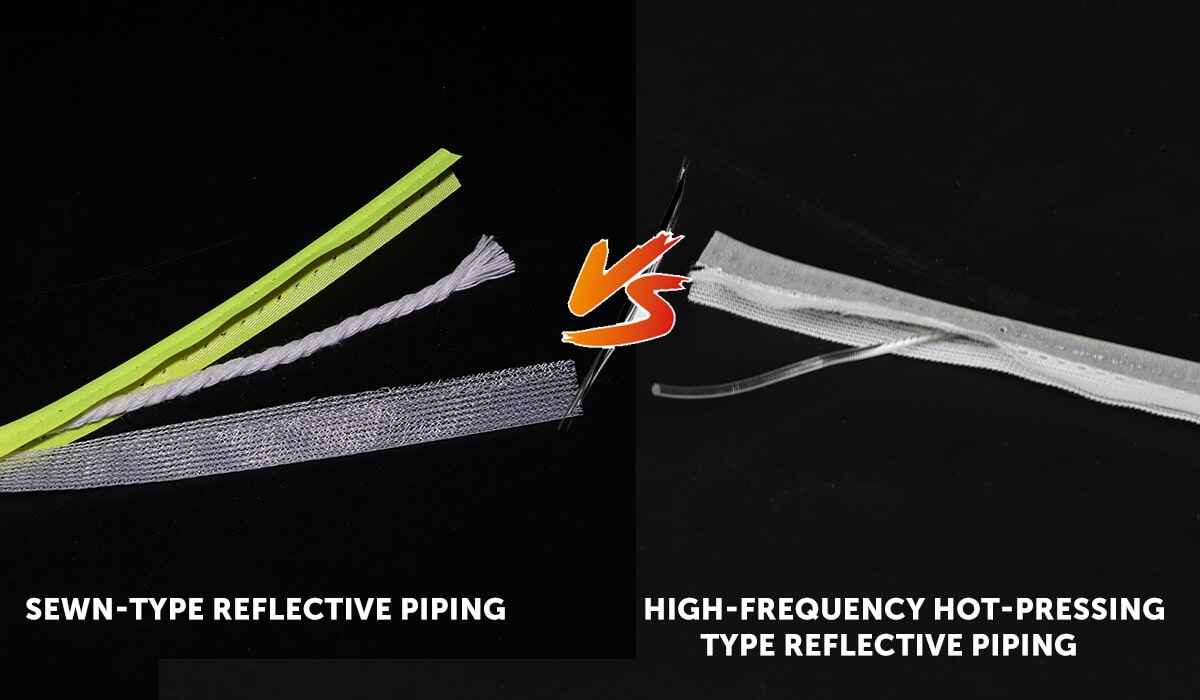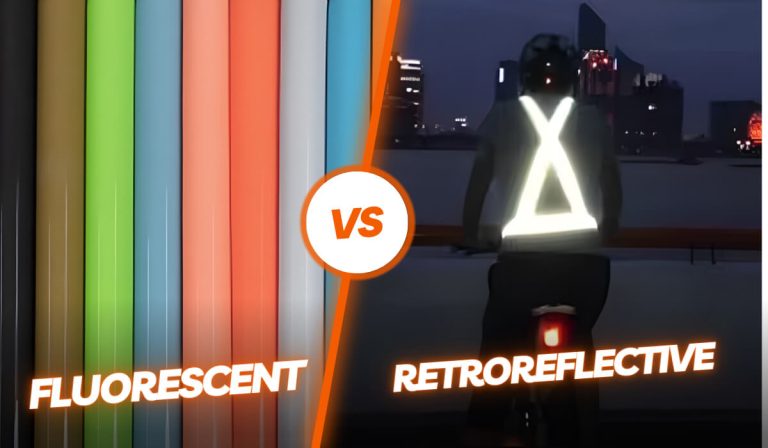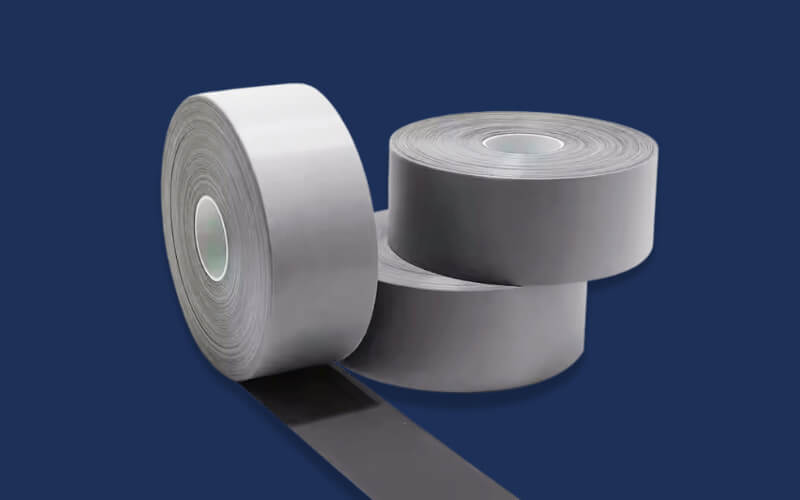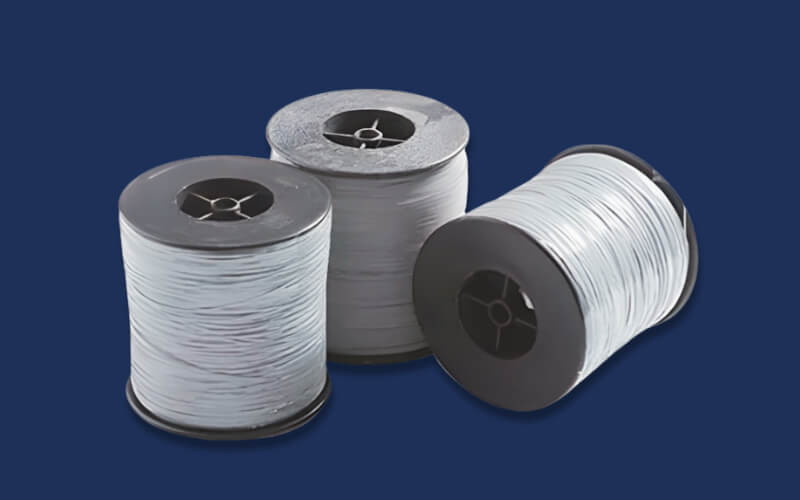The difference between reflective yarn and reflective thread

MAX Reflective Accessories Design Director
Reflective accessories are essential for safety in low-light conditions, from enhancing visibility for workers to adding a touch of flair to fashion designs. Choosing the right reflective material, however, can be confusing. This post clarifies the distinctions between reflective yarn and reflective thread, guiding you toward the best choice for your specific project.
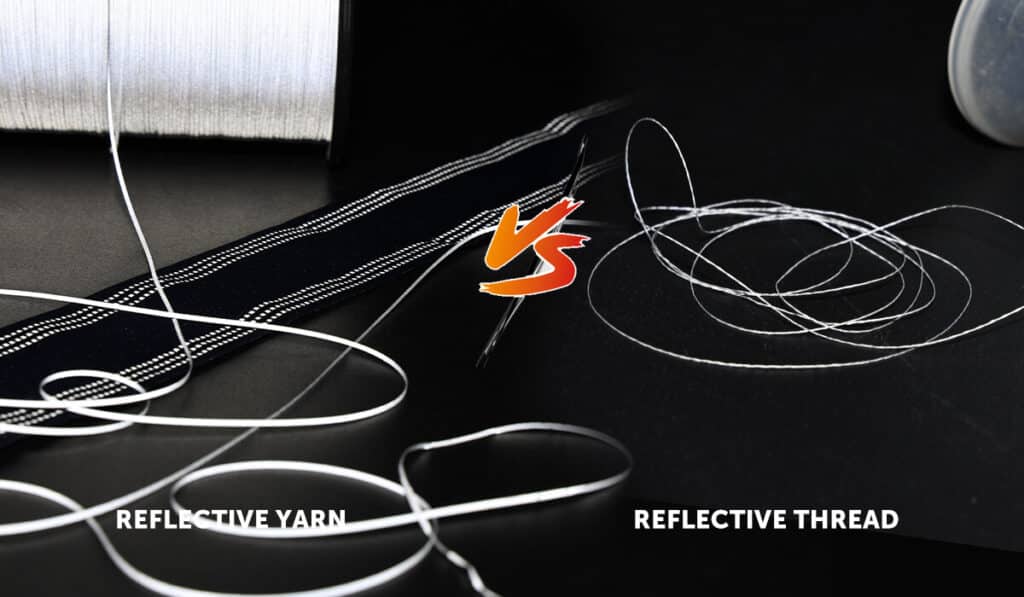
What is reflective yarn?
Reflective yarn is a product made from reflective fabrics that has been cut into millimeter or micron strips using specialized slitting equipment.
Both polyester/cotton (T/C) and synthetic fiber reflective fabrics undergo complex manufacturing processes to produce reflective fabrics with varying performance characteristics. The main production processes are as follows:
1. Implanting reflective glass beads of varying sizes and refractive indices onto PET or PE film.
2. Gluing and lamination.
3. Peeling and curing.
How does reflective yarn work?
Like reflective yarn, the thread’s glass beads reflect light. However, its reinforced structure makes it better suited for precision applications, such as stitching or embroidery, where strength and detail matter.
Advantages of reflective yarn
- High brightness: Provides superior reflectivity, even surpassing ordinary light sources.
- Flexibility: Adapts well to various shapes and applications.
- Eco-friendliness: Reflects ambient light, requiring no additional energy source.
- Varied sizes and finishes: Available in different thicknesses and with single-sided or double-sided reflective surfaces.
Versatile applications of reflective yarn
Reflective yarn offers incredible versatility, lending itself to various applications:
- Knitting and crocheting: Create high-visibility garments like hats, mittens, and scarves.
- Pet accessories: Enhance the safety of pets with reflective collars and leashes.
- Fashion and crafts: Add a touch of sparkle to woven straps, zippers, clothing, and bags.
- Athletic wear: Integrate reflectivity into sportswear for enhanced visibility during nighttime workouts.
- DIY projects: Easily incorporate reflective elements into everyday items.
- Elastic fabrics: The slight elasticity of the PET base allows for integration into stretch materials.

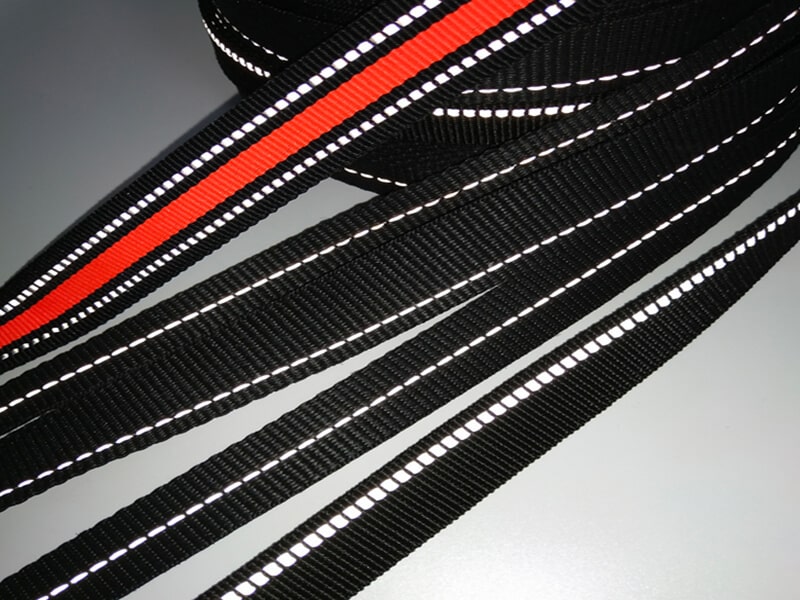
What is a reflective thread?
Reflective thread is a hybrid material created by twisting traditional sewing thread (e.g., polyester or nylon) with reflective yarn. This combination enhances durability while retaining retro-reflective properties. The result is a stronger, thicker thread that withstands rigorous sewing and embroidery processes.
How does it work?
Like reflective yarn, the thread’s glass beads reflect light. However, its reinforced structure makes it better suited for precision applications, such as stitching or embroidery, where strength and detail matter.
Applications of reflective thread
- Detailed stitching and embroidery: Ideal for adding reflective logos to safety vests, sportswear, and other garments.
- Sewing: Creates subtle yet effective reflective accents on various items.
- Webbing and straps: Used in the production of reflective bag straps, belts, and other accessories.
- Knitting: Can be used to create entire garments with reflective properties, though less common than yarn due to its fineness.
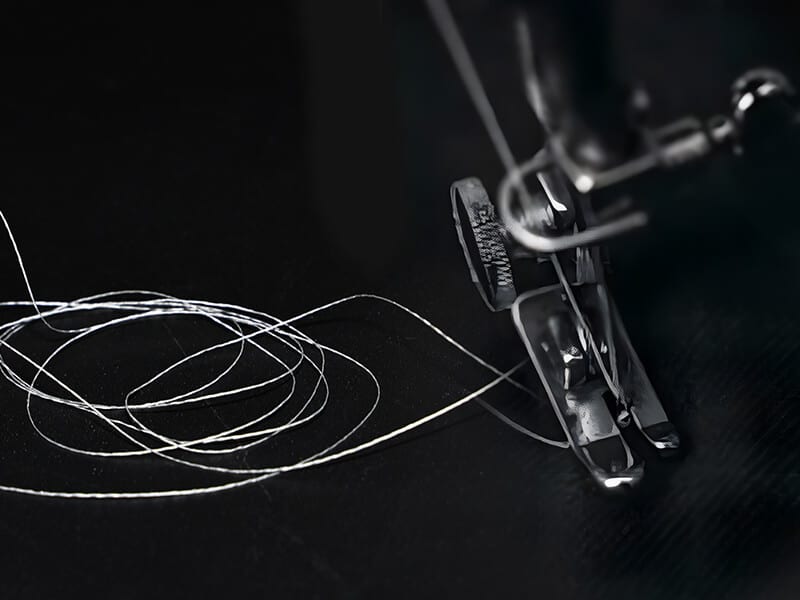
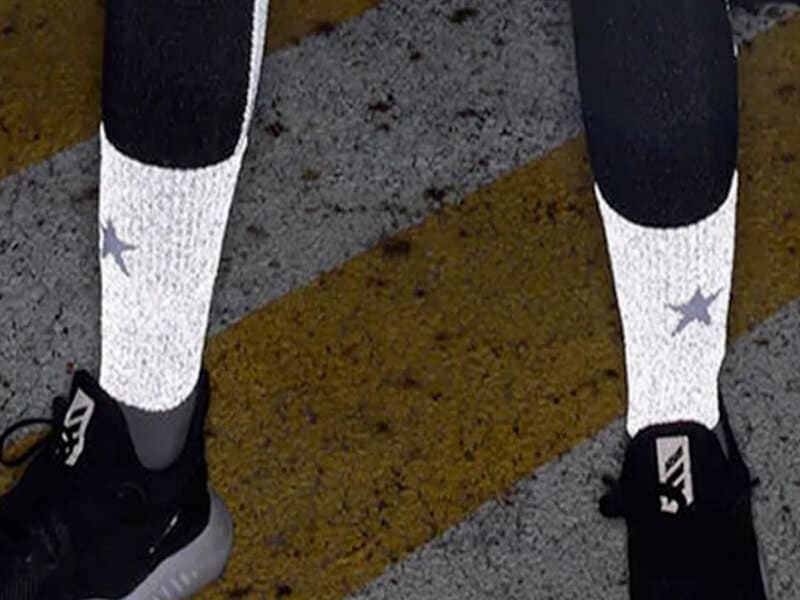
Key differences: reflective yarn vs. reflective thread
Aspect | Reflective Yarn | Reflective Thread |
Composition | Pure reflective film strips | Blended with traditional sewing thread |
Thickness | Ultra-fine (0.25–0.35mm) | Thicker due to multi-strand twisting |
Strength | Delicate; prone to breakage under high tension | Sturdy; withstands heavy-duty sewing |
Elasticity | Slight stretch from PET base | Rigid; minimal elasticity |
Primary Use | Weaving entire fabrics or large-scale designs | Detailed stitching, embroidery, or edging |
Best For | Knitted garments, elastic fabrics, DIY | Precision work, logos, reinforced seams |
Common Issues with Reflective Yarn
Conclusion
Both reflective yarn and thread offer unique benefits, but their applications depend on your project’s demands. Reflective yarn excels in creating seamless, large-scale visibility, while thread provides precision and strength for detailed work. By understanding their differences, you can elevate your designs’ safety, functionality, and style.
Ready to Innovate? Contact MAX today to explore our professional solutions for reflective yarn and thread. Let’s help you shine brighter!

Related blogs

Related products
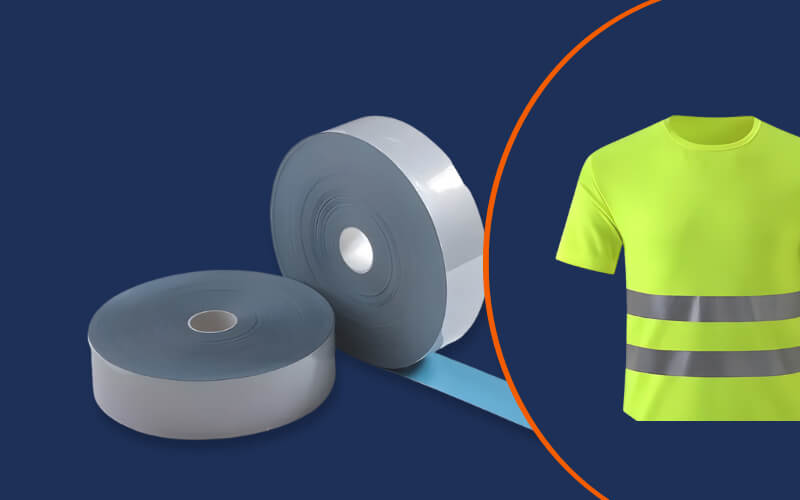
Reflective Heat Transfer Vinyl
